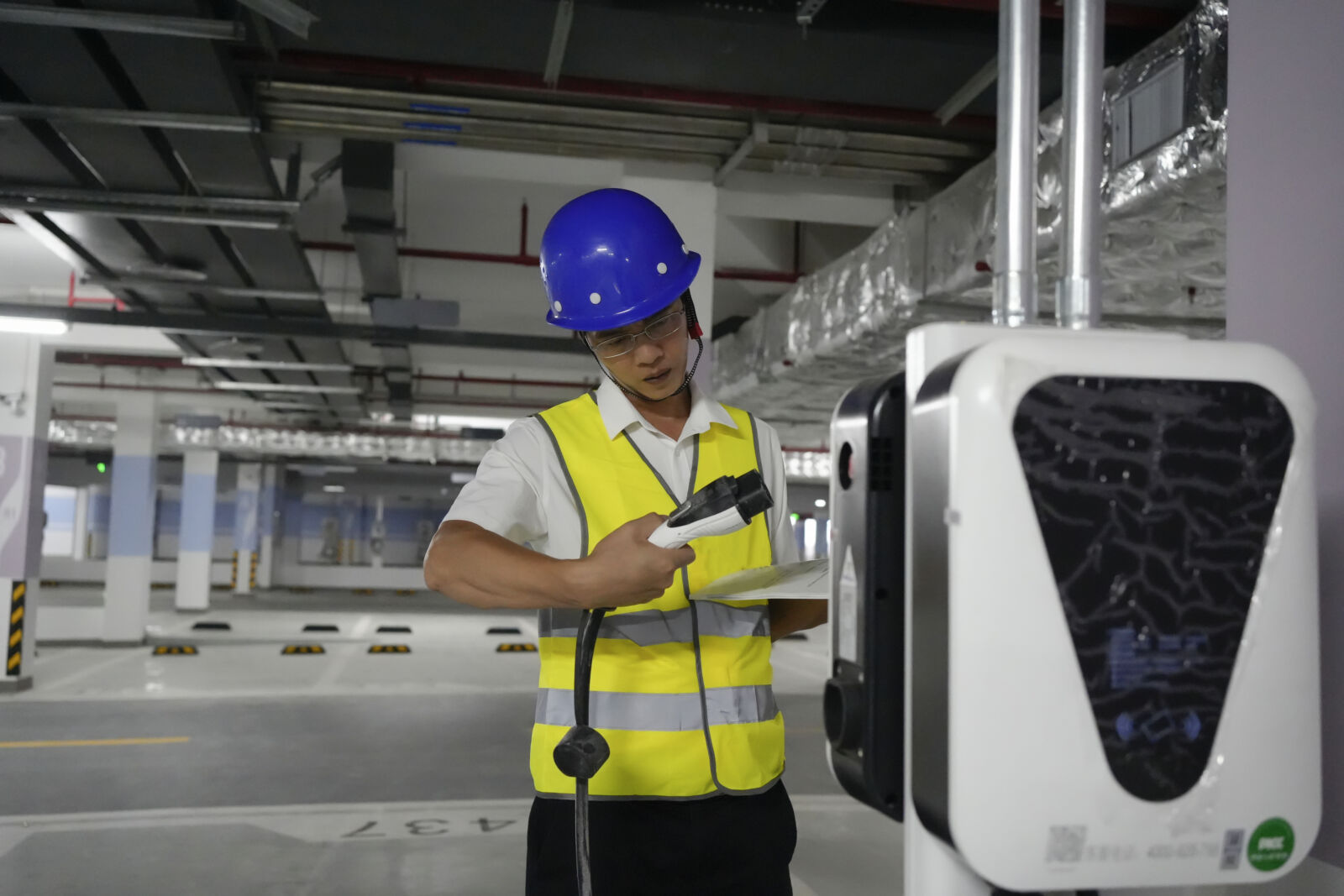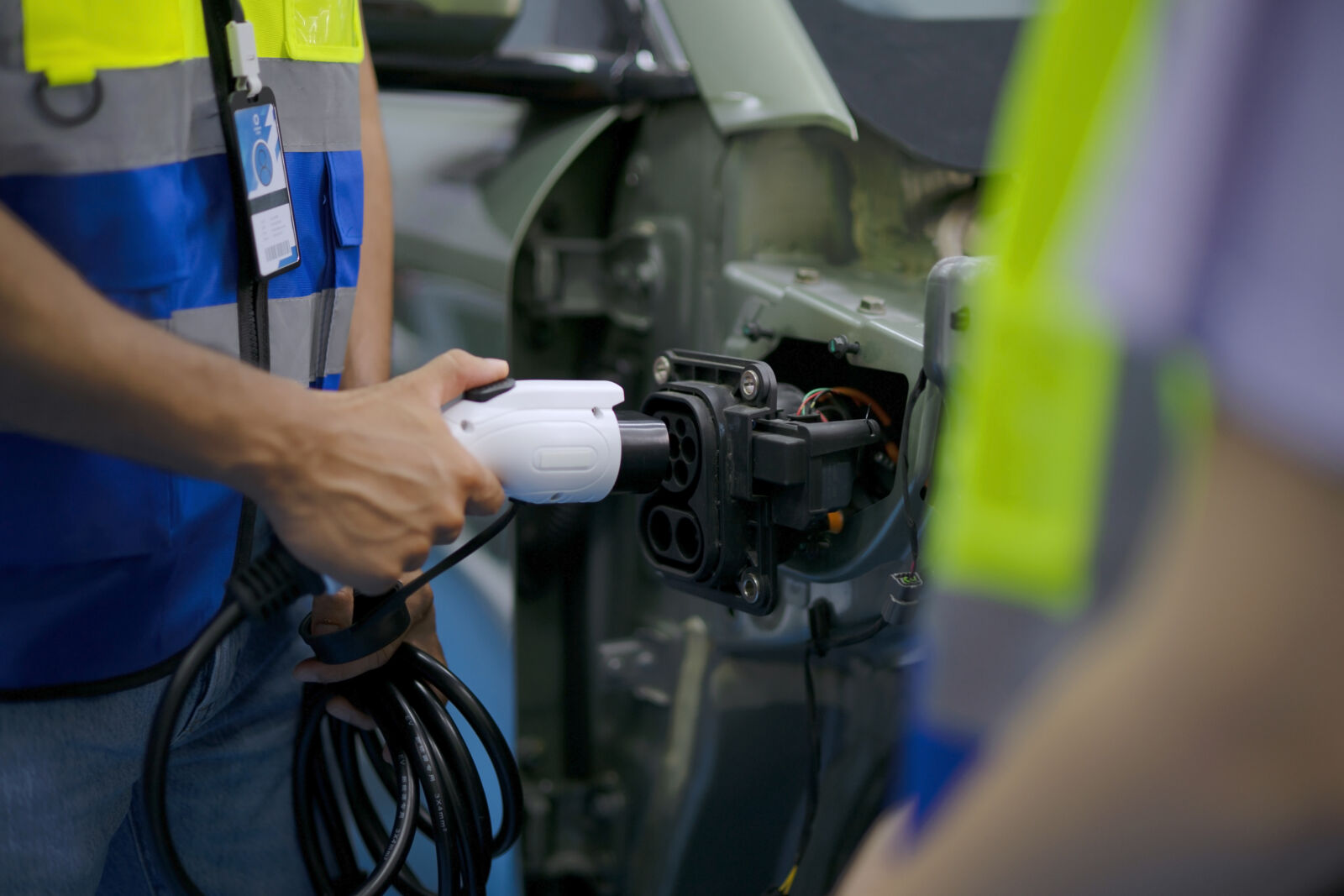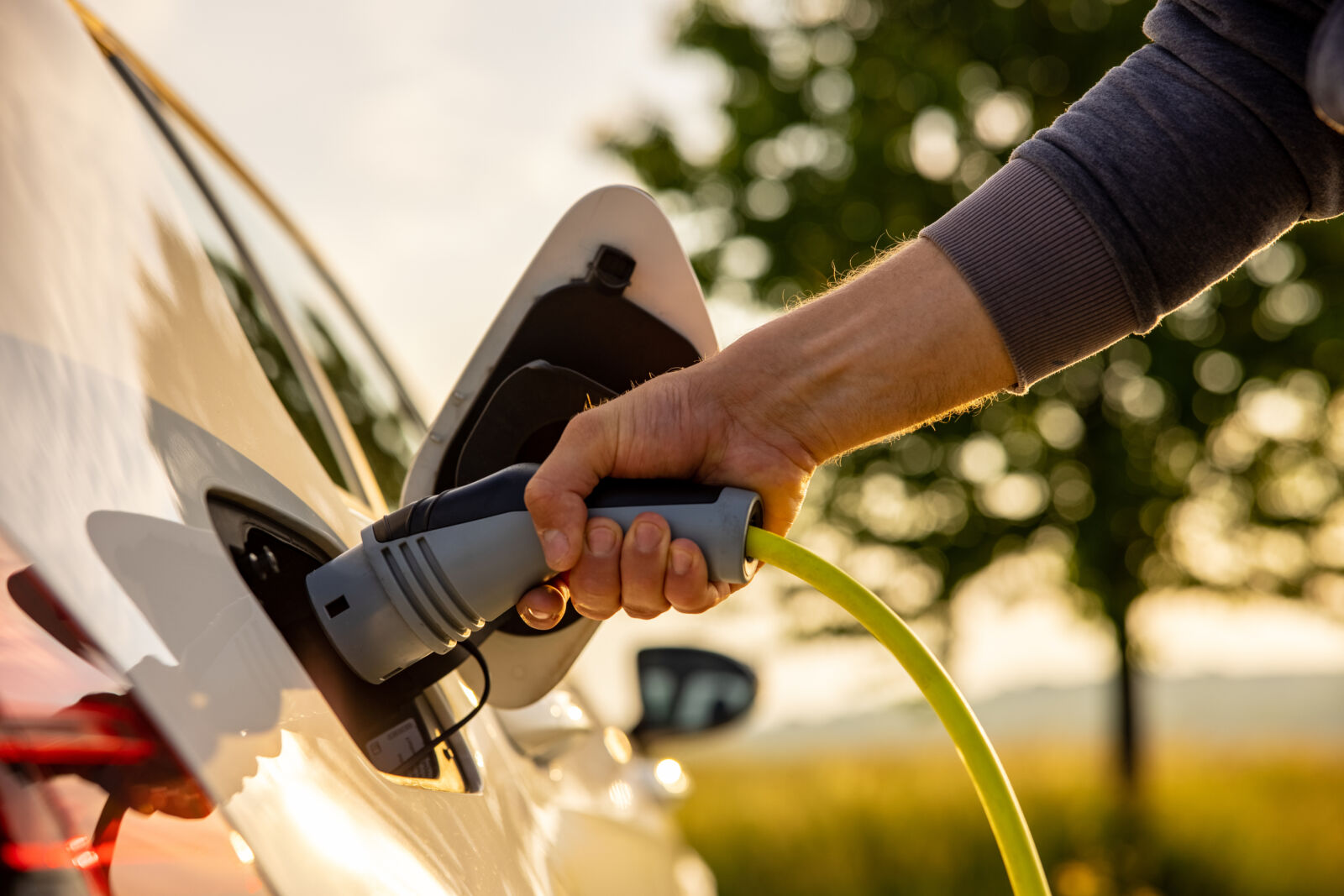The emerging transportation electrification demands require a skilled and diverse workforce.
The electrification of transportation is driving a significant shift in the energy job market, creating new opportunities and demand for various skill sets.
“The Department of Energy is funding companies to fill in the gaps in the supply chain to build that full system here, and that means jobs,” explains U.S. Energy Secretary Jennifer Granholm on ABC News.
There has been a shift toward electric vehicle (EV) purchases, ushering in a transformative period for the automotive industry. Consumers are increasingly looking to purchase goods that have a positive environmental impact, and government initiatives, such as tax incentives, have also been catalysts for EV growth.
In just the past several years, governments and industry have created vehicle electrification goals for 2030. The U.S. federal government, several states and all the major U.S. automakers (as well as many global automakers) are now aiming for 50% electric vehicle (EV) market share by 2030 and have committed hundreds of billions of dollars to both battery and electric vehicle manufacturing. In parallel, large national fleets (FedEx, Amazon, Lyft, Uber, etc.) have announced similar, or even more aggressive, electrification goals. But it’s not yet clear what the pace of action and investment should be each year – and year over year.
Nearly one in five cars sold in 2023 was electric, according to International Energy Agency (IEA), which adds that electric car sales in 2023 were 35% higher than 2022 – more than six times higher than in 2018, showing robust growth.
While relative annual U.S. electric vehicle growth in 2023 was slower than in the preceding two years, demand for electric cars and absolute growth remain strong, IEA reports, adding that 2024 EV sales are projected to rise by 20 percent compared to 2023 – more than half a million more sales. And Statista states that the EV market is projected to grow by 10.7 percent per year between 2024 and 2028, bringing the total market volume to $906.7 billion.
“This movement toward electrification, I think, is inexorable,” Granholm says on ABC News. “It is happening. The automaker CEOs will tell you they’re not pulling back or reversing trend in their investments. They may be slowing a little bit, but, honestly, I think this is a snowball that is only going to accelerate.”
And industry experts believe electric cars are just the beginning, pointing to buses and trucks as next steps. IEA predicts vehicle electrification could even lead to a reduction in oil demand by as much as 5 billion barrels a day by 2030.
A skilled and diverse workforce will be needed to prepare the grid, support charger installations and grid interconnects for consumers and fleets and provide the highest possible level of reliability and resilience in the resulting grid. Now more than ever, electric power companies are facing an unprecedented demand for skilled and diverse talent due to a diminishing talent pipeline. In an effort to successfully meet the pace of national and industry electrification goals, utilities will need to understand the scale of the talent gap, identity the jobs needed, prepare people more quickly to take on increasingly technical careers and employ new ways of thinking about recruiting and training to include those who are underrepresented in today’s workforce.
“It’s really a huge manufacturing and jobs win for the country to be able to build this ecosystem here,” Granholm adds.
People looking to enter this exciting and rapidly growing clean energy space can look to energy companies for lasting, rewarding careers.

Demand Sparks Surge in EV Energy Jobs
The exponential growth potential of the EV industry is leading to a surge in energy industry job opportunities.
There are multiple job categories that will see increased demand, including in the installation and maintenance of EV charging infrastructure and the production of EV charging infrastructure components.
Accurate projections of these job requirements are essential for planning strategies to ensure a steady supply of skilled workers and to maximize the economic benefits of this transition.
For instance, “electric vehicle adoption and charging infrastructure expansion are inextricably linked,” says Peter Slowik from The International Council on Clean Transportation. “To ensure the success of this transition and meet climate change mitigation goals, it’s imperative that charging infrastructure development keeps pace with EV adoption. The good news is it will also create a lot of jobs.”
Earlier this year, the Electric Power Research Institute (EPRI) launched eRoadMAP™, an interactive online public tool that allows users to explore how quickly vehicles in different areas are expected to electrify and identifies where there are large energy needs in a small area that may require a grid upgrade. eRoadMAP™ helps send clear demand signals that build confidence in the timing and pace of EV adoption enabling utilities, regulators and industry stakeholders to prioritize “no regret” investments, explains Liz Hunt, who supports the electrification of transportation group at EPRI, an independent, nonprofit organization that conducts research and development related to the generation, delivery and use of electricity to help address challenges in the energy industry.
“We know that a skilled and diverse workforce will be needed to prepare the grid, support charger installations and grid interconnects for consumers and fleets, and to provide the highest possible level of reliability and resilience for the grid,” says Hunt. “With that said, it’s not yet clear what the pace of action and investment should be each year as it relates to workforce. We are currently working to conduct research and leverage tools like eRoadMAP™ to help industry better understand the scale of the talent gap and identify and prioritize the jobs needed to support the emerging demands of transportation electrification.”
Potential EV energy careers span several areas and include positions that require a vast array of qualifications.
EV Manufacturing
As the demand for electric vehicles continues to rise, there’s a growing need for skilled workers in EV manufacturing plants.
These jobs include assembly line workers, engineers specializing in battery technology, electric motor design and automation experts.
The White House’s goal is to have EV sales make up at least 50 percent of new vehicle sales by 2030. In 2023, EV sales were 1.4 million – a record.
What’s more, “the satisfaction rate of EV owners is through the roof – like 95 percent,” Granholm adds on ABC News. “People who have driven an EV won’t go back because it’s so much better. It’s so much cheaper to operate. I mean, if you fill up your average gas tank today, an average car, it’s about $49. If you charge and go that same distance, it’s about $15. If you fill up every week, that is a huge savings for your average citizen.
“So just on the savings of operating an EV alone, they’ve become more affordable,” she adds. “I think that as people decide to replace their vehicles, EVs will become something that more people will look at once they’ve heard their neighbors say, ‘You know what, this is really great.’”
Charging and Electric Power Industry Infrastructure
The expansion of charging infrastructure is crucial for the widespread adoption of electric vehicles. This includes the installation and maintenance of EV charging infrastructure and the production of EV charging infrastructure components. Jobs in this sector include installation technicians, electrical engineers, project managers and software developers who work on smart charging solutions.
By 2032, approximately 4.1 million non-home chargers and 37.4 million residential chargers will be needed to support the electric light-duty vehicle fleet, according to the International Council on Clean Transportation (ICCT). Non-home chargers include workplace Level 2 chargers, public Level 2, and public DC fast chargers. Home chargers consist of multifamily home chargers and single-family home chargers. By 2032, approximately 29,000 ultra-fast and fast chargers, and 500,000 overnight chargers will be needed to support the electric medium- and heavy-duty vehicle fleet.
“The Biden administration has put $7.5 billion into building out these charging stations in places where the private sector is not already going,” Granholm says. “We’ve got about 170,000 charging stations across America right now. They’re adding about 900 per week. With the money that has come from the president’s agenda … we think we’re going to get to 500,000 by 2026. And more after that.
“We want people to know that because of the federal funding, they will be every 50 miles, not more than 1 mile off of the freeway or a transportation corridor,” she adds. “We are very focused on fast charging so that people feel comfortable.”
In order to meet this goal, “we need to continue accelerating our investments,” explains Pete Buttigieg, U.S. Secretary of Transportation.
Additional job creation is possible from increased domestic production. ICCT estimates that about 33 percent of level 2 chargers and 100 percent of DC fast chargers will undergo final assembly in the U.S., creating more than 13,000 jobs in charger assembly by 2032. This number does not account for jobs in charger component production and assembly, which carries the potential for even greater job growth.
“There will be over one million jobs created over the next 10 years to build, deploy and create the public charging infrastructure,” Hunt explains.
The electric power industry (utilities) will also need people to prepare and manage the grid to ensure a safe, reliable and resilient grid. The jobs include linemen, grid planners, engineers, line maintenance and repair, etc.
Battery Technology
Batteries are at the heart of electric vehicles, and advancements in battery technology are essential for improving range, charging times and overall performance. Energy jobs in this area encompass battery researchers, chemists, materials scientists and engineers specializing in battery management systems.
“People are going to have jobs doing responsible extraction of minerals, they’re going to have jobs processing those critical minerals, they’re going to have jobs building the batteries – the anode, the cathode, the separator material – all of those are businesses that go into a battery,” Granholm explains on ABC News. “Then they’re going to have jobs assembling the battery into the vehicle.”
Renewable Energy Integration
Electrification of transportation increases the demand for electricity, which drives the need for renewable energy generation. Jobs in this sector include solar and wind farm technicians, energy analysts, grid operators and renewable energy project developers.
“The utility component makes sure the make-ready infrastructure is in the ground and safe, and that the consumers have access to safe, reliable power at the charging stations,” Hunt explains.
Transportation Planning and Policy
With the shift toward electric transportation, there’s a need for professionals who can develop and implement policies to support this transition. Jobs in this category include urban planners, policymakers, environmental analysts and sustainability consultants.
Supply Chain Management
The electrification of transportation requires a robust supply chain to support the production and distribution of electric vehicles and related components. Jobs in supply chain management include logistics coordinators, procurement specialists and supply chain analysts.
Maintenance and Repair
As electric vehicles become more prevalent, there will be a growing demand for technicians skilled in servicing and repairing electric drivetrains, battery systems, charging stations and other EV components.
“The repair of the charging station alone requires a licensed electrician or electrical engineer with a four-year degree or high school diploma for charging station maintenance and repair,” Hunt says.
Data Analytics and Software Development
The integration of electric vehicles with digital technologies opens up opportunities in data analytics, software development and cybersecurity. Jobs in this sector include data scientists, software engineers, cybersecurity experts and AI specialists.

How Energy Companies Are Promoting EV Jobs
Energy companies are actively promoting EV careers through various initiatives aimed at attracting, training and retaining talent in this rapidly growing sector.
It starts with education and training programs. Energy companies often collaborate with educational institutions, vocational schools and training centers to develop programs focused on EV technology, maintenance and installation. These programs provide hands-on training and certifications, preparing individuals for careers in EV-related fields.
“The current challenge is how we can scale these programs to get the critical mass needed,” Hunt says.
Currently, the International Brotherhood of Electric Workers offers the Electric Vehicle Infrastructure Training Program (EVITP), an EV training and certification program. The U.S. Department of Transportation recommends it as the preferred national certification standard for training the workers who will install the $5 billion of EV charging equipment. This program was developed in collaboration with the National Electrical Contractors Association and educational institutions.
Participating in career fairs, industry events and outreach programs to raise awareness about EV careers and opportunities within their organizations is also important for energy companies, so they can engage with students, job seekers and professionals through targeted recruitment efforts, networking events and online platforms. Hunt points to the Department of Defense’s SkillBridge Program as an example of how service members are being connected to the clean energy sector.
Many energy companies are offering internship and apprenticeship programs specifically tailored to EV-related roles. These programs provide students and entry-level workers with valuable on-the-job training, mentorship and experience in areas such as manufacturing, maintenance and technology development.
Energy companies are also prioritizing career development and advancement opportunities for employees interested in pursuing EV-related careers by offering continuing education courses and pathways for advancement within the organization, encouraging employees to build expertise in EV technology and related fields. Hunt says some energy companies are retaining workers experienced in other energy sectors by reskilling and retraining them for these new EV clean energy roles.
Recognizing the importance of diversity, equity and inclusion in fostering innovation and driving success in the EV industry is also a crucial component, Hunt shares. Energy companies can promote diversity in recruitment, hiring and leadership positions, creating an inclusive work environment where individuals from diverse backgrounds feel valued and supported in pursuing EV careers. The Center for Energy Workforce Development is working with community-based organizations like Goodwill to conduct training in under-served areas to inform people about job prospects in this area and ensure they are set up for success by giving them the support they need via wrap-around services like transportation, childcare and stipends, Hunt explains.
“The opportunity to reach a more diverse talent pool is an exciting prospect to me,” Hunt shares. “As the utility industry faces a diminishing talent pipeline, there is no better time than now to attract talent that has been historically underrepresented in our industry,”
EV Jobs Have a Positive Impact on Local Communities
The electrification of transportation is reshaping the energy job market, creating opportunities across various sectors and requiring a diverse range of skills and expertise. This movement is also helping to expand the investment in the American workforce and boost local community economies in both urban and rural populations, as well as among communities of color, tribal communities, and disadvantaged and underserved communities.
“For many positions available in this industry, the general skills needed include a natural curiosity, dexterity for electrical components, critical thinking and problem solving,” Hunt explains. “If an individual is curious and motivated, they have an opportunity to support this emerging industry and have a meaningful career. These are rewarding, exciting and buildable careers that are well compensated and have great benefits.”




